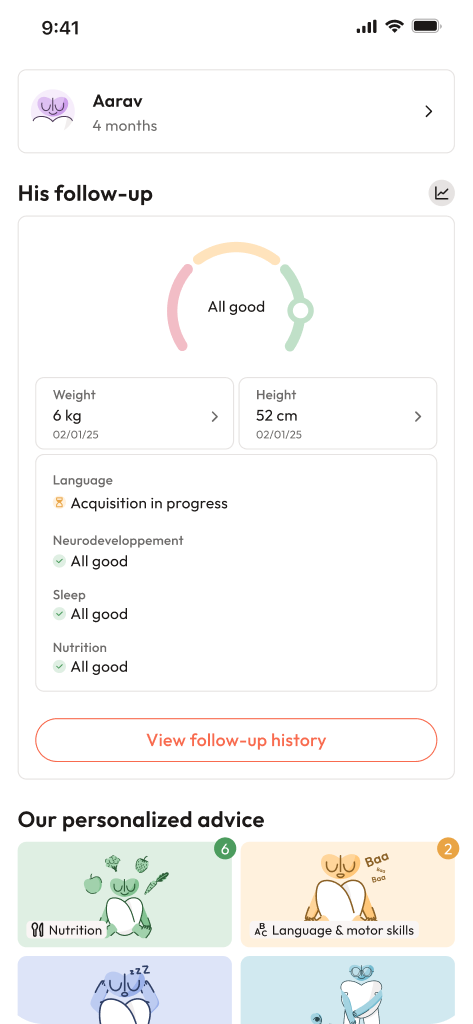For many parents-to-be, the journey towards folic acid pregnancy is a patchwork of excitement, hope, and countless doubts. It is natural to wonder: Should I start taking supplements before I even see those two lines on the test? Is just eating more lentils or spinach enough? What if you are already pregnant and only now learning about all this? In a world crammed with advice, recommendations, and sometimes outright myths (Does folic acid lead to twins? Does every supplement suit everyone?), it can feel overwhelming. Balancing daily routines, deciphering supplement labels, and staying energised is no small task, especially when one simple nutrient can make such a big difference. Here, every parent deserves clarity and honest facts, not pressure or judgment. The science tells a clear story — but adapting it to your unique circumstances is where the real challenge lies. So, breathe deep, and let’s decode folic acid pregnancy—from when to begin, how much to take, what happens if you miss a dose, to why it matters so much for that tiny new life just forming.
Why folic acid matters: The science behind the recommendation
Every story of folic acid pregnancy starts well before the first heartbeat. Imagine: by the third to fourth week after conception, when many still wait for a positive test, the brain and spinal cord — formed from the neural tube — have already begun to shape. Here, folate (natural form) and folic acid (supplemental form) shine. They are not just vitamins; they are architects, essential for DNA synthesis, cell division, and proper closure of the neural tube. Clinical studies consistently reveal that folic acid pregnancy supplementation in the periconceptional phase reduces risk of neural tube defects (NTDs) — such as spina bifida or anencephaly — by about 60–70% when started early. That’s not just encouraging; it’s transformative, especially because this window often closes before parents even realise they are expecting.
Still, the benefits cascade much further. Folic acid pregnancy status relates to better placental development, lower chances of maternal megaloblastic anemia (a blood disorder that can sap energy), and perhaps even better fetal growth overall. The story is clear: early and enough folic acid primes the stage for a healthy beginning.
When to start and how to continue: Timing is everything
Is it ever too soon for folic acid pregnancy supplements? For most, the answer is no. The neural tube forms between days 21 and 28 after conception. That means, ideally:
- Begin a daily supplement (about 400 micrograms) at least 1 month before you plan to conceive — and yes, 2–3 months is even better.
- Continue through the first 12 weeks of pregnancy. Many keep going all through pregnancy and breastfeeding.
- For high-risk situations — like previous pregnancy affected by NTDs, certain chronic medical conditions (type 1 diabetes, epilepsy requiring anticonvulsants), or particular medications — clinicians may suggest much higher doses (up to 4 mg daily) with close monitoring.
Already pregnant and late to the party? No judgment. Start your folic acid pregnancy supplement immediately; any addition helps ongoing fetal growth, especially in the early stages. And yes, during breastfeeding, requirements remain elevated, often needing continued supplementation (400–800 micrograms daily), always under clinician guidance.
Three key steps for parents:
- Consider a supplement if there’s even a small chance of pregnancy.
- Combine with a diet rich in legumes, leafy greens, and fortified grains.
- Seek preconception counselling if you have a complex health history.
Understanding folic acid: Natural forms, supplements, and genetics
Some parents encounter a surprisingly complex vocabulary: folate (naturally in food), folic acid (synthetic, found in supplements/fortified grains), and even L-methylfolate (5-MTHF, the active form the body uses). The magic — and slight confusion — occurs because the body must convert folic acid pregnancy supplements into a usable active form, a process relying on enzymes (like MTHFR). About 1 in 5 people may have a genetic variant that slows this conversion, sometimes suggesting a special form (L-methylfolate) is beneficial — but routine genetic testing is not standard.
Practical takeaway: for most, standard folic acid works well; only rarely does a doctor switch to L-methylfolate.
Dietary Folate Equivalents (DFE) — what are they?
Supplements and foods aren’t always comparable. The DFE system helps:
- DFE = food-based folate micrograms + (1.7 × folic acid micrograms from supplements/fortified foods eaten with meals).
So, 400 mcg folic acid equals roughly 680 mcg DFE.
How much is enough? Dose, upper limits and safety
Let’s break it down:
- General preconception and early pregnancy: 400 micrograms folic acid daily, continued through week 12.
- Pregnancy goal: About 600 mcg DFE per day (combine diet and supplements).
- Breastfeeding: Need rises to around 500 mcg DFE per day.
Some groups require more:
- Pre-existing diabetes, malabsorption (e.g., celiac disease), or certain medications: higher dosages like 1 mg/day under supervision.
- Prior NTD, special assisted reproduction treatments, or on certain anticonvulsants: up to 4 mg/day, under clinical care.
Safety net: stick under 1,000 micrograms (1 mg) daily unless prescribed. Overdoing supplementation can mask a vitamin B12 deficiency; hence, monitoring B12 is absolutely essential, especially if higher doses are used.
Food sources, preparation, and fortification: Maximising dietary folate
Diet can contribute powerfully, though not always enough for the early weeks.
Strong sources (per typical serving):
- Spinach (cooked): ~250 mcg
- Lentils: ~350 mcg per cup
- Chickpeas: ~280 mcg
- Fortified breakfast cereals: often 100–400 mcg per serving
But tradition sometimes fights modern science; prolonged boiling destroys folate. Instead:
- Try steaming, microwaving briefly, or enjoying some vegetables raw (when safe).
- Combine a bowl of lentils, spinach, and a citrus fruit for a “folate power meal.”
- Fortified cereals, breads, and pastas deliver consistent folic acid, which in public health studies has slashed NTD rates significantly after fortification policies.
Labels sometimes mention %DV (% Daily Value) or micrograms. Always recalculate for DFE when comparing foods and supplements.
Choosing the right supplement: Practical advice for parents
Not all prenatal vitamins are clones. When selecting:
- Confirm folic acid pregnancy content matches 400–800 mcg, unless your doctor suggests otherwise.
- Check for key co-nutrients: iron, vitamin B12, iodine, vitamin D, choline.
- Avoid excess vitamin A (retinol) and mega-doses.
- Third-party seals (USP, NSF) help ensure consistent quality.
- Gummies? Check if they skip iron or have lower folic acid amounts; you might need to pair with a standalone supplement.
Consistency is king — a supplement you can take daily, with minimal side effects, is best, whether a tablet, a gummy, or liquid.
Complex cases: Medication, health conditions, and advanced maternal age
The folic acid pregnancy journey isn’t identical for everyone:
- Medications like anticonvulsants (phenytoin, carbamazepine), methotrexate, or even some diabetes medications alter folate metabolism.
- Conditions such as diabetes, celiac, inflammatory bowel disease, or after bariatric surgery change absorption or requirements.
- Adolescents, vegans or strict vegetarians, women over 35, or pregnancies with twins need tailored advice. For plant-based diets, also check B12 status regularly.
Specialist input is valuable — don’t hesitate to request a referral when situations feel complicated.
Testing, monitoring and practical safety
Routine testing of folate isn’t universal, but understanding the basics helps:
- Serum folate reflects recent intake, while red blood cell (RBC) folate indicates longer-term status.
- Consider tests if you have malabsorption, restrictive diets, personal or family NTD risk, or unexplained medical dilemmas.
Since folic acid pregnancy supplements can mask vitamin B12 deficiency symptoms, especially at higher dosages, B12 levels warrant surveillance for vegetarians, long-term metformin users, older mothers, and anyone with absorption concerns.
Most adults tolerate folic acid well; digestive upset or allergy is rare. Myths — like folic acid causing twins or a healthy diet alone always being enough — don’t hold water. Science supports supplementation, mainly due to how early the prevention window occurs.
Optimising absorption, medication timing and daily routines
Parenting routines already stretch patience and memory. Build folic acid pregnancy habits with these real-world tips:
- Pair iron (if present) with vitamin C-rich foods for absorption, but avoid tea, coffee, or calcium supplements at the same time.
- Take supplements with food if nausea is a concern, or choose night-time dosing.
- Try capsule, enteric-coated, or gummy versions if one type upsets your stomach.
- Use reminders — whether an organiser or phone alarm — to stay consistent.
Risk of deficiency and the potential consequences
Why so much fuss? Inadequate folic acid pregnancy levels most infamously elevate the risk for neural tube defects, but risks do not stop there. These include some heart defects, cleft palate, low birth weight, premature delivery, and in mothers, a type of anemia that causes tiredness, pallor, or breathlessness — especially problematic for those on restrictive diets low in B12, those with chronic conditions, or those missing preconception supplementation.
Practical checklist and preparation plan
Folic acid pregnancy: Your tangible steps
- Pick a start date; earlier is better.
- Take a 400 mcg supplement daily, unless told otherwise by a doctor (might be 1 mg or 4 mg for special cases).
- Ensure your prenatal contains folic acid, B12, and the other core micronutrients.
- Double-check your medicine cabinet for potential interactions with your practitioner.
- Strategically add folate-rich foods to your meals.
30-day action plan:
- Week 1: Begin supplement. Establish a daily schedule (maybe after brushing teeth or with breakfast).
- Week 2: Consult about medications or over-the-counter drugs with your doctor/pharmacist; increase folate intake by adding one serving of a rich food per day.
- Week 3: If you feel queasy or forgetful, experiment with timing or format of the supplement.
- Week 4: Check-in with your clinician to review your approach — especially if you face special circumstances.
Postpartum and breastfeeding: Continuing the benefits
Did you know that folic acid pregnancy doesn’t end with delivery? While breastfeeding, folate needs remain elevated (around 500 mcg DFE per day). In practice, many healthcare professionals encourage ongoing supplementation (400–800 mcg/day), and a balanced diet fortified with iron and B12 to help maternal recovery. If planning another pregnancy soon, sustained supplementation ensures readiness and continuity.
Key takeaways for parents
- Start early — even before conception, if possible — and maintain the recommended dose of folic acid pregnancy through pregnancy and breastfeeding.
- Supplementation of folic acid pregnancy is consistently supported by medical evidence to reduce neural tube defects and support both maternal and fetal health.
- Choose a supplement thoughtfully, check for nutrient companions like vitamin B12 and iron, and adjust for individual medical needs.
- Daily routines, a balanced diet and support from your healthcare provider are the winning trio.
- There is support at every step. For more personalised advice, tips, and free children’s health questionnaires, download the Heloa app.
Questions Parents Ask
Can I take folic acid with antibiotics like amoxicillin?
Absolutely. Common antibiotics such as amoxicillin generally do not interfere with folic acid pregnancy supplementation. However, some special antibiotics — like trimethoprim or certain sulfa drugs — can affect folate metabolism. Always mention your supplement to your healthcare provider or pharmacist. They can reassure you or adjust timing if needed. In routine scenarios, continuing both is perfectly safe.
I missed a dose — is it alright to double up next day?
No need to panic if you forget. If you miss a dose, simply take it as soon as you remember on that same day. Do not double the following dose to catch up; just resume your normal plan. If you miss several doses or feel uncertain, check with your healthcare provider for friendly, practical advice. Slips happen — creating simple reminders often helps.
Is 5 mg (5000 mcg) of folic acid too much during pregnancy?
A 5 mg dose is much higher than the general guideline for most folic acid pregnancy situations. Such amounts are prescribed for particular high-risk groups (for instance, if there is a prior neural tube defect in pregnancy or certain chronic illnesses), always with close clinical monitoring because high intake can hide signs of vitamin B12 deficiency. Do not self-medicate at this dosage; if your doctor prescribes it, feel free to ask for a detailed explanation and appropriate follow-ups.

Further reading:









